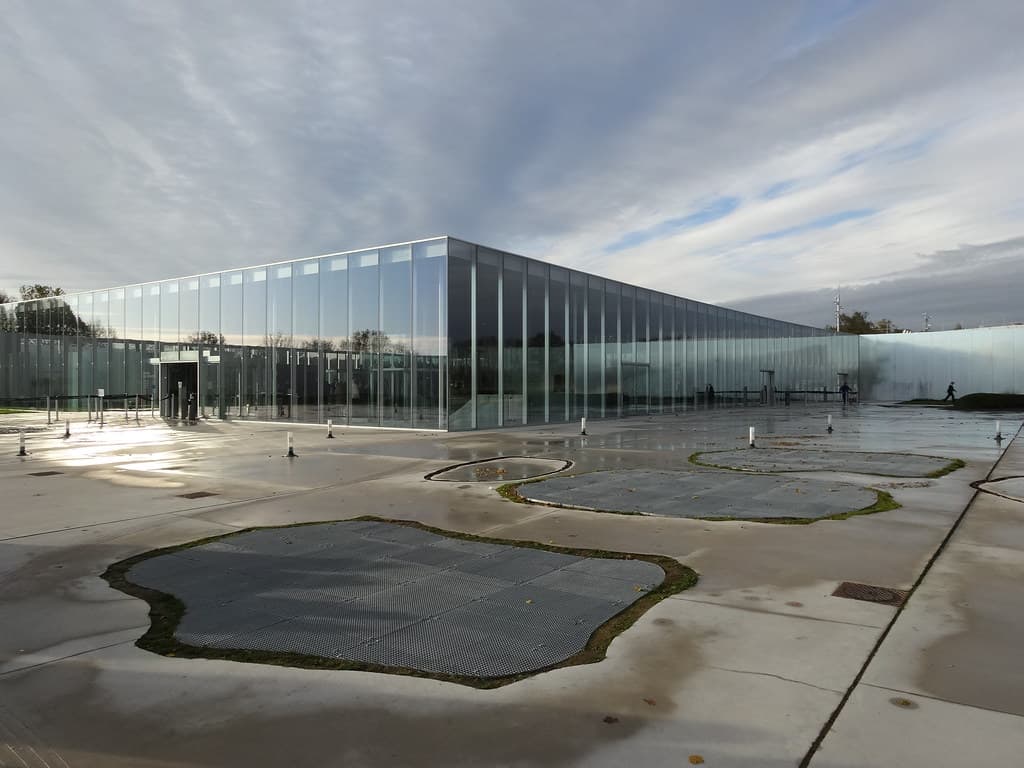The male role in architecture has historically been dominant, as the profession has traditionally been considered a male territory, and for a long time, men were expected to become leaders and creators in the field of architecture, while women were excluded or marginalized.
In the past, male architects had greater access to job opportunities, funding, and institutional support compared to women. This was due to a variety of factors, such as cultural expectations about gender roles, women’s lack of access to education, and barriers to entering the job market.
In this article, we want to share some historical facts that represent the advancement of women in the field of architecture by citing and paying tribute to 10 female architects who have made a breakthrough in the industry, helping future generations of women architects to achieve their dreams.
Table of Contents
Female Architects: History of Women in Architecture
The history of women in architecture dates back several centuries, although the presence of female architects has always been marginalized and underestimated. Throughout history, they have had to fight against sexism and discrimination in the field of architecture, which prevented them from accessing the same education and professional practice as men.
But despite these obstacles, some female architects have made important contributions to architecture over the centuries. An early example of a female architect is the Egyptian queen Hatshepsut, who commissioned the construction of the Temple of Hatshepsut at Deir el-Bahri, Egypt, in the 15th century BC.
In medieval Europe, aristocratic and religious women also contributed to architecture, often as patrons or sponsors of projects. For example, the abbess Hildegard of Bingen designed the church of the Rupertsberg monastery in Germany in the 12th century.
In modern times, female architects began to emerge more frequently, such as Sophie Hayden Bennett, the first woman to graduate in architecture from MIT in 1890. However, many of these women were marginalized and not recognized in their time.
It was in the second half of the 20th century that female architects began to have greater visibility in the profession, especially in the 1970s, when a feminist movement began in the field of architecture. Since then, female architects such as Zaha Hadid, Kazuyo Sejima, Carme Pigem, and Kate Orff have won prestigious awards and led innovative projects around the world.
The Role of Women in Architecture during the 20th Century and Current Role:
During the 20th century, female architects held a very limited role. This was largely due to gender biases in society that viewed architecture as a male-dominated discipline. Even though there were some pioneering women in the profession, such as Zaha Hadid, Denise Scott Brown, and Jane Drew, they often faced discrimination and sexism in their careers.
Today, the role of women in architecture has significantly improved compared to the last century. Women are increasingly present in architecture schools and in professional practices, and their successes are increasingly recognized in the industry. However, there is still much to be done to address gender inequality in architecture, especially in terms of representation at the highest levels of the profession and salary remuneration.
Despite persistent barriers, female architects are making very important and significant contributions to the profession: they are promoting more inclusive and sustainable design, leading innovative projects around the world, and increasing the diversity of voices in architecture, which will ultimately lead to a more equitable and relevant field for society as a whole.
10 Female Architects and Their Milestones That Made History
Throughout history, female architects have made significant contributions to the field of architecture, even though they have often been marginalized and undervalued. Here are some examples of the most important milestones achieved by female architects:
- Zaha Hadid: She was the first woman to win the Pritzker Prize in architecture in 2004, one of the most prestigious awards in the field of architecture. She also designed numerous iconic buildings around the world, such as the London Aquatics Centre for the 2012 Olympics and the Guangzhou Opera House in China.
- Kazuyo Sejima: She is the co-founder of the Japanese architecture firm SANAA, which has won various awards and designed notable buildings such as the Louvre-Lens Museum in France and the new Toledo Museum of Art’s Glass Pavilion in Ohio.
- Carme Pigem: She is the first Spanish woman to win the Pritzker Prize in architecture in 2017, along with her partners at RCR Arquitectes. Her studio’s work has been recognized for a poetic use of light and materiality in projects such as the La Lira Theater in Ripoll, Spain.
- Norma Merrick Sklarek: She was the first African American woman to graduate in architecture in the state of New York, and later became the first African American woman to be elected a member of the American Institute of Architects. She was also one of the first women to hold a leadership position in an architectural firm in Los Angeles.
- Lina Bo Bardi: She was an Italian-Brazilian architect who designed the São Paulo Museum of Art in Brazil, which has become an icon of modern architecture in Latin America. She also designed other notable buildings, such as the Teatro Oficina and the SESC Pompeia in São Paulo.

- Maya Lin: She is an American architect and artist of Chinese origin known for designing the Vietnam Veteran’s Memorial in Washington D.C., which was unveiled in 1982. Lin’s design was selected from over 1,400 proposals and was widely praised for its simplicity and elegance.
- Marion Mahony Griffin was an American architect and artist who worked with Frank Lloyd Wright in the Prairie School and was one of the first women to graduate in architecture from MIT. She also designed several notable buildings, such as the Castlecrag Public Library in Australia and the Hawaii State Capitol.
- Denise Scott Brown is an American architect and urbanist who worked with her husband, Robert Venturi, at the architecture firm Venturi, Scott Brown and Associates. Scott Brown is known for her work in urban planning and was one of the first female architects to advocate for gender perspectives in urban design.
- Charlotte Perriand was a French architect and designer who worked with Le Corbusier in the 1920s and designed several iconic furniture pieces, such as the LC4 chair and the B306 chaise-longue. She also designed the interior of the French UNESCO building in Paris and the Les Arcs mountain refuge in the French Alps.
- Elizabeth Diller is an American architect who co-founded the architecture firm Diller Scofidio + Renfro in 1981. The firm’s work focuses on the intersection of architecture, art, and technology and has included projects such as the High Line in New York and the Stanford Art Center in California.
In summary, female architects have achieved significant recognition in the field of architecture, winning prestigious awards and designing some of the world’s most iconic buildings. 
Why is the existence of women architects important in the world?
It is important to have female architects in the world because, among many qualities, women have a unique and valuable perspective that can contribute to the practice of architecture in a meaningful way. The inclusion of women in the profession can help address gender inequality and the lack of diversity in built environment design.
Furthermore, female architects can be role models for girls and young women who want to pursue careers in science, technology, engineering, and mathematics. The presence of women in leadership roles can inspire younger generations to pursue their own dreams and professional ambitions.
It it also important to consider that architecture has a significant impact on society and the environment, and the perspective and skills of women can be particularly valuable in addressing some of the challenges we face today, such as climate change and the need to build more inclusive and equitable communities.
In summary, having female architects in the world is important because it promotes gender equality, fosters diversity in the profession, and helps address some urgent societal and the environmental challenges.
The presence of women in architecture has been crucial for the discipline’s development and advancement. Despite the obstacles they have faced throughout history, women architects have demonstrated their ability to create innovative and functional designs, as well as promote greater inclusion and diversity in the field.
In recent years, significant changes have occurred in the architecture industry, such as the growing presence of women in architecture study programs and the emergence of new tools and technologies that facilitate collaboration and teamwork.
As the discipline continues to evolve, it is important to continue promoting diversity and inclusion in the field of architecture to ensure that the perspectives of all people, regardless of their gender, are considered in creating more efficient and sustainably built environments.
Female architects have a crucial role to play in the industry.
If you would like more information about all the courses we offer on our GoPillar Academy platform, for just 60usd! Please do not hesitate to email the following email address: [email protected]. Access






